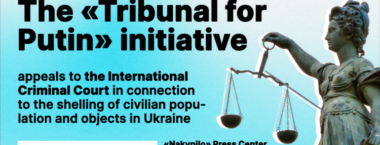In autumn, during a campaign against impunity of Ukrainian border guards on the Crimean strait, we managed to draw the attention of the administration of the State Border Guard Service of Ukraine to this problem.
Subsequently, a number of suggestions for improving the situation on the checkpoints has been developed. For instance, it was offered to place posters for persons who cross the administrative border between Crimea and the mainland and approve a form of the resolution of the State Border Guard Service on denial to entry into the mainland Ukraine.
The first issue being somehow solved, as for the second one, the things are still right where they started, despite the utmost importance. When a border guard signs a document, he realises that he may bear responsibility for his decision. And this fact makes him act in compliance with the law. However, adoption of this document seems to be inconvenient for any representatives of the government, because, according to the law, denying a Ukrainian citizen in crossing the checkpoint is rather difficult.
However, as far as posters are concerned, the Border Guard Service was quite enthusiastic about our suggestion and, approximately by late January – early February, the posters were printed and submitted to the management of the Border Guard Service. They are probably even located somewhere on checkpoints. I say “probably”, because I have not seen them myself, but there were photos made by the Border Guard Service, moreover, witnesses confirm that they saw such posters near passport control windows on a checkpoint on the road to Kherson…
Last Saturday, I decided to use the opportunity to check the state of affairs on a checkpoint on Chonhar strait. Honestly speaking, I was very surprised not to find any signs of posters.
Only at the entrance to the checkpoint did I find something like a poster. Predictably, it was situated far from where people could see it, to the right from the entrance, and designed in way that the background emblem seemed brighter than the text it contained:
After speaking to one of the administrators, a lieutenant colonel, at first I managed to find out that, due to regular rotations, no one remembered if there were any posters on the checkpoint. Although, later on, when he learned that there was an order from above to place these posters, my interlocutor went on saying that they should have existed. By the end of the conversation, he was assuring me that these posters existed for sure, but they were probably washed down by salty spatters of Sivash. Having agreed that I would send them models of posters via email and they would print them themselves and place where needed, I went home.
Some 10 minutes later this lieutenant colonel phoned me and said that they had found the posters or, to be more precise, their soaked remnants. When I insisted on him sending me photos of them within the next 10 minutes in order to make sure that it was true, he promised to do so. However, he phoned me again two hours later and informed me that they did find four samples of posters. At the same time, he vaguely explained that they either had been on the checkpoint, but I missed them in a rush, or they were placed there after they had been found. I was sent a pile of photographs to prove that. The poster is clearly on its place, although, as you can see on the photo above, it was not there a little earlier that day, and adhesive tape in the hand of the photographer on one of the photos rolls on him.
The only positive aspect of this story is that the Border Guard Service does react to the snarling made by human rights activists. But it underreacts.
Posters are not nearly enough to bring order into checkpoints. They are designed simply to inform citizens about their rights. After all, an educated citizen is more protected than an uneducated one. Still, few people are ready to defend their rights, even when they know that they have been violated. Nevertheless, our Border Guard Service tries to hide somewhere even this small poster. Posters are situated not near the windows where communication between citizens and border guards takes place, but far from these windows, in order to decrease the chances of them being noticed. That is a pity. Never mind more serious problems…



